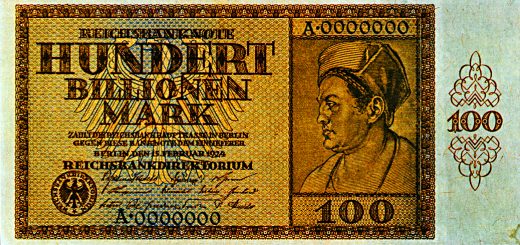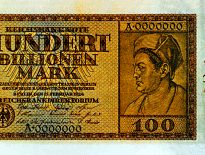Helicopter Money

Today’s post looks at helicopter money.
Contents
Helicopter money
This post is the second in a series of three:
- Last time, we looked at whether and why inflation has gone away
- In this article, we’ll look at helicopter money
- In the final article, we’ll examine modern monetary theory (MMT)
Helicopter money is a version of QE where instead of creating credit balances to fund bond purchases, money is directly transferred into the accounts of consumers for them to spend in the real economy.
- In the original version – proposed by Milton Friedman in 1968 as a theoretical one-off tool against deflation – banknotes would be printed and dropped from helicopters.
Let us suppose now that one day a helicopter flies over this community and drops an additional $1,000 in bills from the sky, which is, of course, hastily collected by members of the community. Let us suppose further that everyone is convinced that this is a unique event which will never be repeated.
More recently, direct transfers of electronic money to bank accounts have been preferred.
- Other versions of the plan include (temporary) tax cuts.
Another version of the plan would impose some kind of time limitation on the validity of the credits, in the same way that many gift and reward cards start to self-destruct (usually through a monthly charge) after a few months’ grace period.
What’s wrong with QE?
The main problem is that it doesn’t seem to work.
- The central banks but bonds from regular banks, and these banks, in turn, should lend money to the private sector to fund investment in new enterprises and hence growth.
But it’s possible that the underlying problem is not a shortage of credit, but a lack of demand.
- This makes QE a “pushing on a string” problem.
Lots of people (and firms) still have too much debt hanging around from the 2008 crisis, and the ones who still want to borrow can’t meet the stiffer post-crisis loan standards.
Austrian Economists would argue that there is no such thing as a lack of demand.
- The primary function of prices is to ration output against an insatiable desire to consume.
Or as Ricardo put it in 1820:
Men err in their production; there is no deficiency of demand.
A second problem for QE is that it’s unpopular on the left.
- Calls for further QE are increasingly likely to be met with demands that free money be given to “the people”, not Wall Street / “the bankers”.
What about MMT?
A further elaboration of QE beyond HM is the “People’s QE” made famous in the UK by Jeremy Corbyn’s Labour party.
- This often involves using QE to fund social programmes and infrastructure investment.
In turn, this is based on Modern Monetary Theory (MMT) – a bonkers strand of economics which argues – amongst other things – that the amount of sovereign debt a country has – and the monetary financing of deficit spending – immaterial.
- We’ll deal with MMT and People’s QE in the third article.
For today, we’ll restrict the discussion to temporary stimulus programs that get closer to the consumer than the traditional bond-buying of QE.
- Longer-term programs which credit the government to fund stimulus spending will be dealt with under MMT.
- And permanent “state salaries” like Universal Basic Income have been dealt with in other articles already.
Since both approaches (HM and MMT) are intended to create some inflation, but not too much, the distinction is largely to do with primary motivation.
- Helicopter money would be short-term and controlled by central banks using inflation and unemployment targets.
MMT is a device to allow left-wing politicians to claim that there is a magic money tree.
So what’s stopping HM?
The uncontrolled use of printing presses has a chequered history.
- Notable disasters include Zimbabwe in the 1990s and Germany in the 1920s
- Success stories included the US in the 1860s and Japan in the 1930s. (( It wasn’t a success for Finance Minister Korekiyo Takahashi, who was assassinated by the Army when he tried to reign in military spending; his successor stimulated new inflation which needed WW2 to get it under control ))
The optimists – which for once include me – would argue that the first two were MMT and the last two were helicopter money.
- But the good news stories are each beyond living memory.
Against that, the current record low inflation and interest rate environment does provide a good buffer against which to experiment with HM.
But the risk remains that if a helicopter drop is successful, a precedent is set that money can be created in that way.
- And it becomes politically ever harder to say no to further drops.
We also need to work out a way of encouraging people to spend the money they receive.
- In a recent mini-experiment in Australia in 2008, only 40% spent the money (35% paid down debt and 25% saved).
Ironically, the permanency of MMT would be likely to mean that people would expect inflation and would bring forward their purchases to take advantage of current lower prices.
- The one-off nature of HM means that it doesn’t have this benefit.
Coppola
Economist Frances Coppola published a book earlier this year called “The Case for People’s Quantitative Easing”.
- Despite the title – and her left-wing inclinations – I think she’s talking about Helicopter Money (HM) rather than MMT.
Over the summer, the book was chosen by John Authers for his book club on Bloomberg.
- Authers also interviewed Coppola, and took questions from the club members.
So let’s see what she has to say.
Coppola’s position is that QE is HM but just implemented badly.
- The money has been invested in EMs and used for share buy-backs and corporate bonuses. (( Boni ))
In 2008 we propped up the financial system and bailed out corporations but what we
didn’t do was give ordinary people spending money.
It seems Coppola is a fan of both HM (as I define it) and MMT – she’d like to see a sovereign wealth fund and a public investment bank.
- She seems unworried by the threat of hyperinflation, seeing as the result of “government ineptitude”.
A one-off helicopter drop designed to bring the economy out of a slump doesn’t necessarily need to mean that people will lose all faith in the currency. The whole point is to raise inflation because we’re trying to increase aggregate demand.
She is also against true central bank independence, arguing that bank monetary policy must dovetail with fiscal policy (from a “responsible” government).
I don’t really think there is any such thing as a fully independent central bank.
And of course, she sees fighting inequality as central to all public sector activity.
Conclusions
QE clearly isn’t working, and negative rates come with the potential for serious distortions which are currently poorly understood.
- So I would be tempted to give HM a go.
Whether any government feels similarly brave is another question.
- The EU is probably banned from using HM (and the 1920s experience in Germany won’t help with sentiment), whilst the US has constitutional issues and the UK may feel that it still has other options.
China is a possibility, but the country had a hyperinflation experience after World War Two.
- Perhaps Japan will be first to bite – or the UK if Brexit goes badly.
Or perhaps it will never happen, or we’ll get MMT instead.
- Until next time.

















I understand the total of announced UK QE to be around £435bn.
Could the money (£c.50bn I believe) (re-)claimed via PPI be viewed as a form of HM?
In which case, what, if any, discernible effect has HM had?
And here is another twist that might not have occurred:
https://uk.yahoo.com/news/police-praise-residents-keep-handing-175652981.html